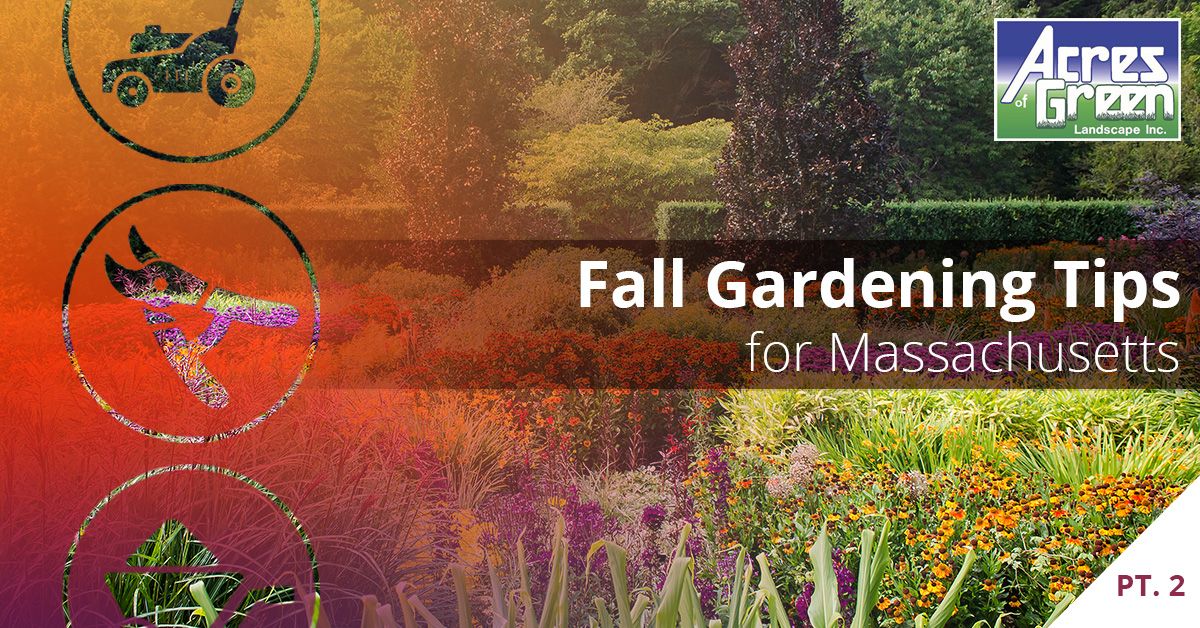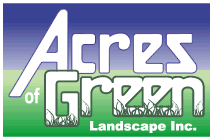This is the second article in our two-part series on fall gardening and landscaping in New England. In our last article, we covered the do’s and don’ts of fall planting, including what trees you should consider planting in fall, and how to help them thrive. In this installment, we’re going to focus on specific perennials that you can plant in fall. They are some of the hardiest varieties of plants anywhere and thrive in all kinds of environments. And, you just might be surprised by a few.
Professional Lawn Care
& Landscaping in Walpole, MA

Part Two: Fall Gardening Tips For Massachusetts
Hostas: These leafy green plants are favorites of gardeners all over the country. There are more than 2,500 varieties, all of which are very sturdy and stand up well to our weather. They do have quite a wide range of sun and shade requirements though, so be sure to check the tolerances for the variety you choose. You can plant several different varieties and have a garden full of leaves ranging from a couple of inches to more than a foot wide, have variegated colors and solid bright hues of green, blue and gold, and a combination of curly, ruffled, and flat shiny leaves.
Ferns: You may associate ferns with the rainforest, but they are very sturdy and mostly thrive in shaded areas. They can handle a lot of water and also thrive in drought-like environments. And there is really nothing like seeing the bright green leaves of a fern coming up through the snow as it melts and makes way for summer. It is amazing.
Purple Coneflowers (Echinacea): They are about as sturdy a plant as you’ll find. And, they’ll keep you in great smelling flowers throughout the fall. They do best in sunny, well drained locations. They like their soil moist, but not soggy. And, if you want to delay their blooms to make sure you’ve got plenty of late summer and fall blooms, just top them off in early June.
Siberian Irises (Iris Sibirica): These are a great pairing for your purple corsnflowers. They’ll bloom in spring and early summer. They grow narrower leaves and stalks than many iris varieties, and their flowers are very delicate. The plants themselves are virtually indestructible. They’ll just keep blooming year after year. If you get yours planted by the end of September, you’ll very likely have plenty of blooms the following spring. If you don’t plant until spring, you’ll probably have to wait a year.
Flowering Sage (Salvia): We saved one of our favorites for last. You can get flowering sage with red, blue, orange, yellow or white flowers. The plants smell heavenly, and are a great addition to boarders or rock gardens. Depending on the variety you choose, they’ll grow from 10-to-60 inches tall. Bees and butterflies love them, while deer can’t stand them. So, if you’ve got problems with deer eating your hostas, which they love, plant a backdrop of flowering sage to deter them.
Well, we hope you’ll be out planting some new things in the garden this fall. If you aren’t much of a gardener but want to get your landscaping ready for the spring, give us a call. We’ll help get your yard ready, make sure everything is healthy, and put it to bed to rest for the winter. Give us a call.

